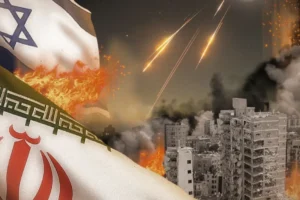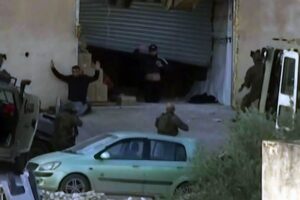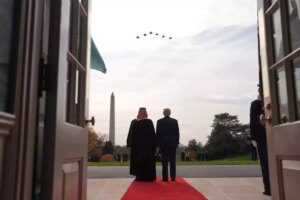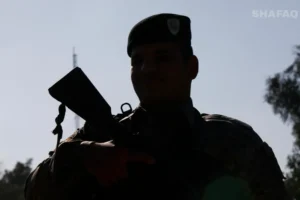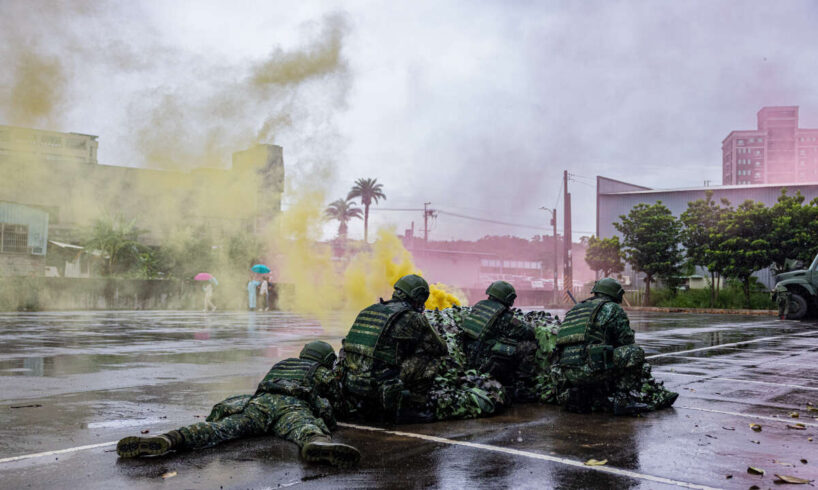
In the pre-dawn hours of Monday, military police equipped with Javelin anti-tank missiles emerged from a Taipei metro station, advancing past closed storefronts before establishing combat positions in what represents Taiwan’s most ambitious defense preparation to date against a potential invasion to unify it with the mainland.
This handout photo taken and released on July 14 by Taiwan’s Ministry of National Defense shows military personnel taking part in an operation at a metro station in Taipei as part of the annual Han Kuang exercises Taiwan’s Ministry of National Defense / AFP
The military’s logistics command simultaneously utilized the mass rapid transit system to transport munitions and supplies from the capital’s eastern periphery, demonstrating how civilian infrastructure would be repurposed during wartime conditions, according to The Financial Times.
Video: A depiction by the PLA of what the unification with Taiwan might look like / Credit: Eastern Command
Taiwan’s armed forces have brought the annual Han Kuang training exercise directly to civilian neighborhoods this year, representing a fundamental shift in how the island prepares for the anticipated realities of Beijing’s military action while simultaneously educating the public about potential crisis scenarios.
The exercises delivered an unmistakable message to Taiwan’s population about the proximity of potential conflict. “If there ever is war, they will be fighting right here,” an elderly local resident identified as Lu told The Financial Times.
Taiwanese navy launches a US-made Standard missile from a frigate during the annual Han Kuang Drill, on the sea near the Suao navy harbor in Yilan county on July 26, 2022 (Sam Yeh / AFP)
Beijing maintains territorial claims over the island of Taiwan and has threatened to seize control through military force if Taipei continues to resist unification indefinitely. Throughout the past decade, Beijing authorities have intensified pressure on what it consider a rebellious province, executing increasingly large-scale military operations in the island’s vicinity.
Taiwan’s authorities has responded by reinforcing the nation’s defensive capabilities, particularly following Russia’s comprehensive invasion of Ukraine in early 2022, according to The Financial Times.
Military analysts observe the Han Kuang exercise as an evaluation of the armed forces’ capacity to respond to evolving threats, replacing choreographed demonstrations with authentic training scenarios. The previous year’s exercise eliminated rehearsals in favor of improvised combat situations.
This year’s program has advanced significantly beyond previous iterations. Monday’s mass rapid transit operation, designed to test “battlefield survivability” under conditions where mainland China would bombard the country with missile strikes, marked the first incorporation of public transportation infrastructure. The innovation represents one of numerous precedents established during this year’s drills, which will conclude Friday after lasting 10 complete days, twice the duration of earlier versions.
In a recent Israel Hayom interview, the People’s Republic of China’s ambassador to Israel, Xiao Junzheng, warned that an attempt to fully break away from the mainland by forming an independent state would be met with a forceful response.
“When our two countries [Israel and the PRC] established diplomatic ties in 1992, the Israeli government acknowledged that there’s one China in the world, and Taiwan is an inalienable part of China. The government of the People’s Republic of China is the sole legitimate representative of the whole of China.”
He continued with particular emphasis: “The Chinese government has already passed the Anti-Secession National Law. According to this law, if the so-called Taiwan government announced or declared independence, wow, the war will be unavoidable. The war is unavoidable. If they declare independence, yes.”
A Taiwan military US Made M1A2T tank fires to a target during the live fire drill that coincides with the annual Han Kuang military exercises, in Hsinchu county, Taiwan, July 10, 2025 (EPA/RITCHIE B. TONGO)
The ambassador emphasized that “Taiwan is a province of China. It was never an independent state and it will never be an independent state. The future of Taiwan should be determined by 1.4 billion Chinese people, including the 23 million Taiwan people, instead of by the will of the 23 million Taiwan people alone.”
Instead of solely practicing the repulsion of mainland China’s invasion forces from beaches and coastal areas as in previous years, the military has focused on responding to scenarios where Chinese maneuvers – which the People’s Liberation Army conducts near Taiwan almost daily – would suddenly escalate into active combat.
The final four days of the exercise will concentrate on training for sustained combat operations throughout the entire country – a scenario that military leadership has previously avoided addressing publicly, The Financial Times reported.
People and PX Mart staffers take shelter inside an underground warehouse, during an emergency and evacuation drill simulating a response to missile attacks, Taipei, Taiwan (EPA/DANIEL CENG)
Nearly 22,000 reservists have been activated, exceeding any previous mobilization in the exercise’s 41-year history and acknowledging that Taiwan’s defense would require comprehensive societal participation. In another unprecedented development, the drill will incorporate the US-supplied HIMARS multiple-launch rocket system.
Admiral Mei Chia-shu, chief of the general staff, has emphasized that the exercises should implement “mission command,” a doctrine that empowers individual units to execute their assignments without excessive oversight from superior commanders.
“If China attacks, one of the first things to go will be our communications systems,” a senior military official told The Financial Times. “So if we say we do realistic training, we must train for our units to be cut off from their superiors.”
However, experts suggested Taiwan’s military would face challenges abandoning traditional centralized command structures, according to The Financial Times.
“Decentralization is a difficult thing for our armed forces,” Sheu Jyh-Shyang, an assistant research fellow at the Institute for National Defense and Security Research, a defense ministry-backed think-tank, told The Financial Times. “It is still hard to see fast progress in that regard.”
The most noticeable transformation involves the drills’ proximity to Taiwan’s civilian population. Tanks, troop transporters and large mobile missile launchers have been maneuvering through the dense urban development that covers most non-mountainous areas of Taiwan.
Their deployment has not proceeded without complications. At least three accidents involving military vehicles occurred during the previous week, The Financial Times reported. A US-manufactured Paladin howitzer damaged several parked vehicles, a window grille and a water tower after incorrectly entering a narrow residential street. A tank dented an illegally parked car on the roadside, while a Patriot air defense missile became lodged under a noodle shop’s awning during a turning maneuver.
A soldier takes part in Taiwan’s annual Han Kuang military exercises in Taipei, July 15, 2025 (Reuters/Ann Wang)
A foreign military official observing the exercises indicated that the accidents demonstrated the complexity of Taiwan’s urban landscape, according to The Financial Times.
“It would be a nightmare for an attacker,” the person said. “It really is very defensible, but that only applies if your own forces have mastered operating in this maze.”
Taiwan’s civilians have demonstrated tolerance for any operational difficulties during the adjustment period.
“They have to train, I understand that,” one woman whose vehicle was damaged by the howitzer told The Financial Times. “And our street is really too narrow.”
